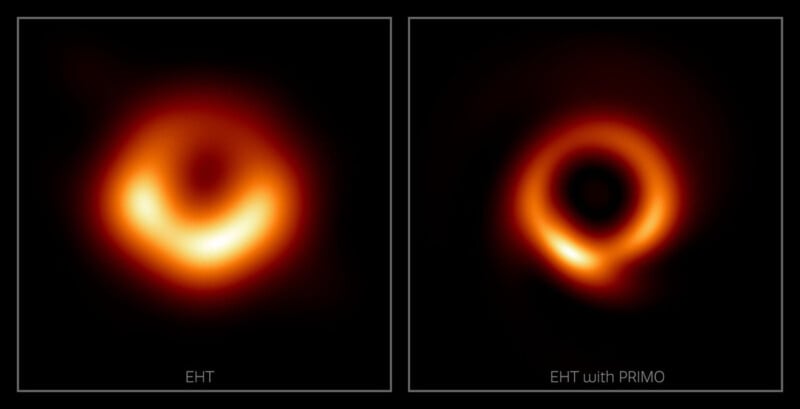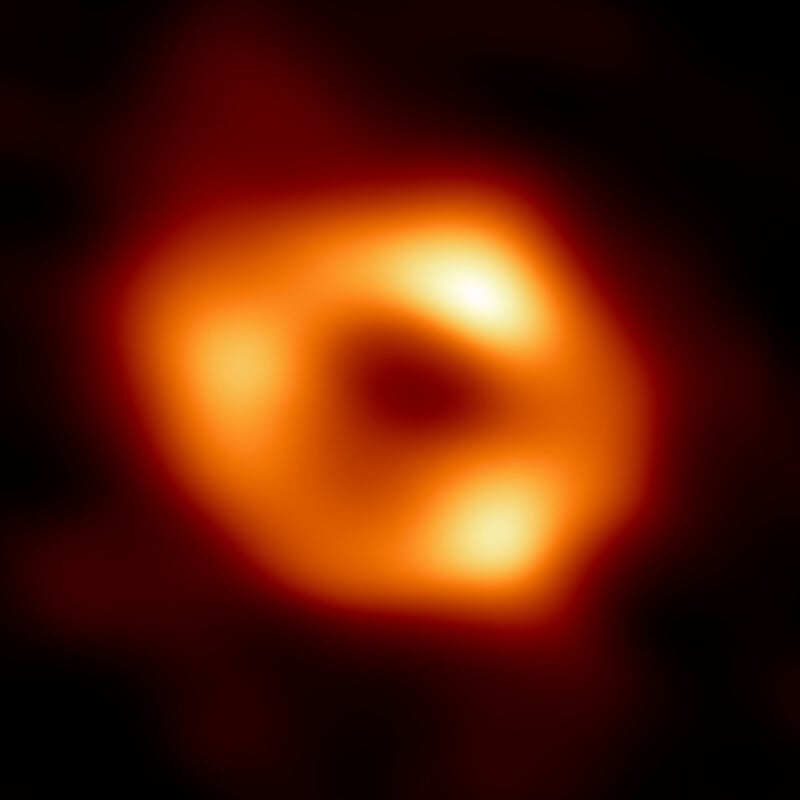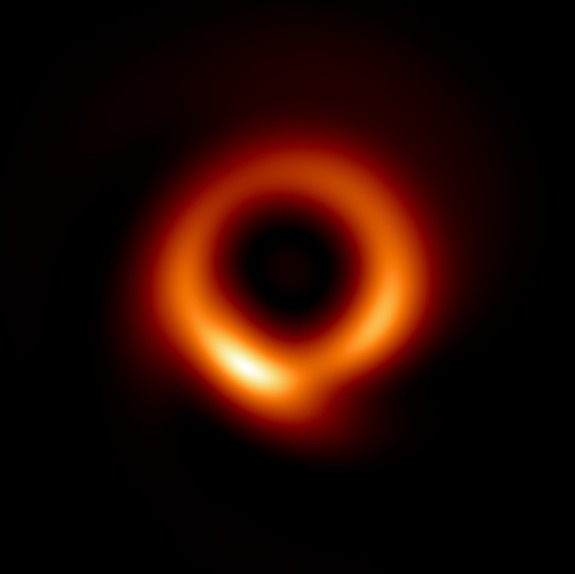Scientists Use AI to Enhance First-Ever Photo of Black Hole

A team of researchers has developed a machine-learning technique to give the first-ever image of a supermassive black hole a new, sharper look.
The iconic image of the supermassive black hole at the center of Messier 87 resulted from a massive international collaboration of more than 200 astronomers. Scientists at the Event Horizon Telescope (EHT) used a planetary-scale array of seven ground-based telescopes to capture the incredible image. Since the original observations, additional telescopes have been added to the array.
The original image shared in 2019 is incredible, of course, but thanks to advances in artificial intelligence (AI), a research team, developed a machine learning technique called PRIMO that maximizes the resolving possibilities of the existing array of telescopes.
PRIMO stands for principal-component interferometric modeling, and it was developed by EHT members Lia Medeiros (Institute for Advanced Study), Dimitrios Psaltis (Georgia Tech), Tod Lauer (NSF’s NOIRLab), and Feryal Ozel (Georgia Tech). A paper describing the team’s work has been published in The Astrophysical Journal Letters.

PRIMO relies upon a type of machine learning called dictionary learning. This technique teaches computers specific rules by exposing them to “thousands of examples.” The team exposed PRIMO to the EHT image of Messier 87, and computers analyzed over 30,000 high-fidelity simulated images of “gas accreting onto a black hole” to find common patterns among the tens of thousands of simulated images.
Space.com explains that the identified patterns were then sorted by how frequently they affected simulations, which helped PRIMO reveal structures the telescope array may have missed during original observations.
“We are using physics to fill in regions of missing data in a way that has never been done before by using machine learning. This could have important implications for interferometry, which plays a role in fields from exo-planets to medicine,” Medeiros explains in a press release published by The Institute for Advanced Study.
“The results were then blended to provide a highly accurate representation of the EHT observations, simultaneously providing a high-fidelity estimate of the missing structure of the image,” explains NOIRLab. The machine learning algorithm used to create the sharp new photo is detailed in The Astrophysical Journal.
“With our new machine-learning technique, PRIMO, we were able to achieve the maximum resolution of the current array,” says lead author Lia Medeiros. “Since we cannot study black holes up close, the detail in an image plays a critical role in our ability to understand its behavior. The width of the ring in the image is now smaller by about a factor of two, which will be a powerful constraint for our theoretical models and tests of gravity.”
“PRIMO is a new approach to the difficult task of constructing images from EHT observations. It provides a way to compensate for the missing information about the object being observed, which is required to generate the image that would have been seen using a single gigantic radio telescope the size of the Earth,” explains Tod Lauer.
Considering that the new photo is technically the result of many AI-generated simulations, it’s natural to wonder how realistic it is.
“The team confirmed that the newly rendered image is consistent with the EHT data and with theoretical expectations, including the bright ring of emission expected to be produced by hot gas falling into the black hole,” NOIRLab explains.
Using the original image, scientists determined that the Messier 87 black hole is 40 billion kilometers (~25 million miles) across, which is nearly 29,000 Suns. The black hole, which is about 500 million trillion kilometers (~311 million trillion miles) away, is believed to have a mass about 6.5 billion times that of the Sun.
However, those figures may be revised due to the image’s AI upgrade. Scientists can study the new image to determine the mass of the Messier 87 black hole with additional precision. “The 2019 image was just the beginning. If a picture is worth a thousand words, the data underlying that image have many more stories to tell. PRIMO will continue to be a critical tool in extracting such insights,” says Medeiros.


Since the original image was released in 2019, EHT scientists have also published research showing the M87 black hole’s magnetic fields and the first image of the supermassive black hole at the center of the Milky Way galaxy. NOIRLab says that PRIMO can also be applied to other EHT observations, including those of Sagittarius A*, the central black hole in the Milky Way Galaxy.
Image credits: L. Medeiros (Institute for Advanced Study), D. Psaltis (Georgia Tech), T. Lauer (NSF’s NOIRLab), and F. Ozel (Georgia Tech)